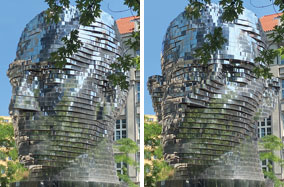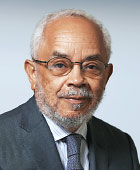Exploring My Connections to Prague
Abstract
I could not believe my good fortune. I was strolling through Prague, the Czech Republic city I never thought I would visit. Several friends had told me that I would be stunned by the beauty of the Vltava River flowing under bridges and carrying along our hopes and memories. There would also be statues, ubiquitous churches, multiple squares filled with cafes and restaurants, and a variety of magnificent building facades and elegant doors. I was warned that once smitten, I would easily be pulled into a curiosity about Prague’s place in the unfolding of history pertaining to the three historic regions of the Czech Republic: Bohemia, Moravia, and Silesia. However, I first had to revisit two probably surprising connections between Prague and me.
The first link came through my attending Sunday School during the 1950s at the Roebuck Street Moravian Church in Barbados. The Moravians benefited from the teachings of Jan Hus, a 14th and 15th century Czech theologian, Catholic priest, and philosopher. He became a Church reformer and important figure in the Bohemia Reformation. I visited the statue of Jan Hus that commands a major square in the Old Town region of Prague. Although executed in 1415 as a heretic by the Council of Constance, Hus’s ideas lived on and led to the formation of the Hussite Church and broad religious, political, and social upheaval over several decades in Bohemia and Moravia.
The Hussites won several wars waged against them. However, they lost a battle in 1620 that caused a re-Catholicizing of the area. The Hussites also suffered from divisions within their own ranks, and the Unity of Brethren broke off around 1457. The Moravian Brethren, to avoid repeated persecution, received permission from Count Nicolas von Zinzendorf to start a new town and church in Herrnhut, Germany. They celebrated this renewal in 1727. Moravian missionaries arrived in Barbados in 1765 and are said to be the first missionaries who allowed the enslaved in their congregation. The Barbadian Moravian church that I attended was set up in 1834. Moravians contribute impressively to caring for the social, educational, and spiritual needs of the population. They taught me quite early about the task of caring for others.

This twisting and reflective sculpture by Czech artist David Černý depicts the head of Franz Kafka. The above photos capture the change in the appearance of the head as the 42 layers of metallic sheets move. The sheets move laterally and independently for 15 minutes each hour so that the face is completely shown.
My other connection to Prague, this time more distinctly adult, relates to encounters with the work of Franz Kafka (1883-1924). Somewhere along my early university route, I confronted Kafka’s books. Colleagues, more experienced than I in this sport of debating Kafka, suggest that the famous site in Prague, referred to commonly as “The Castle,” is the source of Kafka’s ruminations in his book. Having now personally toured the castle, I understand better that Kafka must have loved provoking his readers’ imagination. The story of the man who arrived in town to take up a post in a famous castle is similarly provocative. There is repeated confirmation that for one or another reason he will not take up the post. The explanatory possibilities are legion. There may be a good rationale undergirding the man’s rejection: he is a toy to be played with, those in charge are obsessed with their administrative power, it may be a simple lesson linked to the fundamental unfairness of life, or the author may have been contemplating his relationship with his father and an inattentive God.
Another of my interactions with Kafka came through “Metamorphosis.” The account of progressive deterioration and transformation of a human being into an insect was amplified when I read my colleague Michael Rowe’s symbolic 2002 response in his text “The Book of Jesse.” Rowe described the experience of watching his son respond to the malignant effects of a progressive and incurable illness. His scholarly observations mirrored Kafka’s catalogue of his subject’s eventual loss of human dignity. Rowe meditated on how clinicians and family caregivers must fight against the temptation to abandon human beings caught in the distress of severe illness and bodily disintegration. It is at these times that the call for attention to the patient’s humanity should be loudest. A creative statue, by the Czech artist David Černý, celebrates Kafka in a nearby square. I found it a brilliant attempt to concretize in sculpture Kafka’s literary expression of metamorphosis. Called “Kafka’s Head,” it was erected in 2014, stands about 10.5 meters high, and weighs 39 tons. It is composed of 42 metallic sheets that move laterally and independently for 15 minutes each hour. The two accompanying photos (at left) depict change produced in the appearance of the head.
My visit to the Kafka Museum required adjusting my eyes to its interior semidarkness. I tried to examine documents, listen to audiovisual reports about the author, and consider the objectives of the curated exposition. I learned that Kafka was sickly and did not have a long life. There was ample correspondence about his controlling and authoritarian father, the constant poor health, the interactions with Jewish culture and religion, the inability to maintain solid connections with women, and the use of German in his work. I could feel his compulsion to write. And I have come to appreciate his preoccupation with the absurdity of life, as Samuel Beckett and Jean-Paul Sartre take up in their own work. Kafka seemed to derive little pleasure from doing for others. The boredom in his existence was frighteningly palpable. Perhaps, he missed the Moravian call to serve others. ■




